Art & Infection: The BioArt of Anna Dumitriu
Plague Dress
The 1665 style Plague Dress (2018) is made from raw silk, hand-dyed with walnut husks in reference to the famous herbalist of the era Nicholas Culpeper who recommended walnuts as a treatment for Plague.
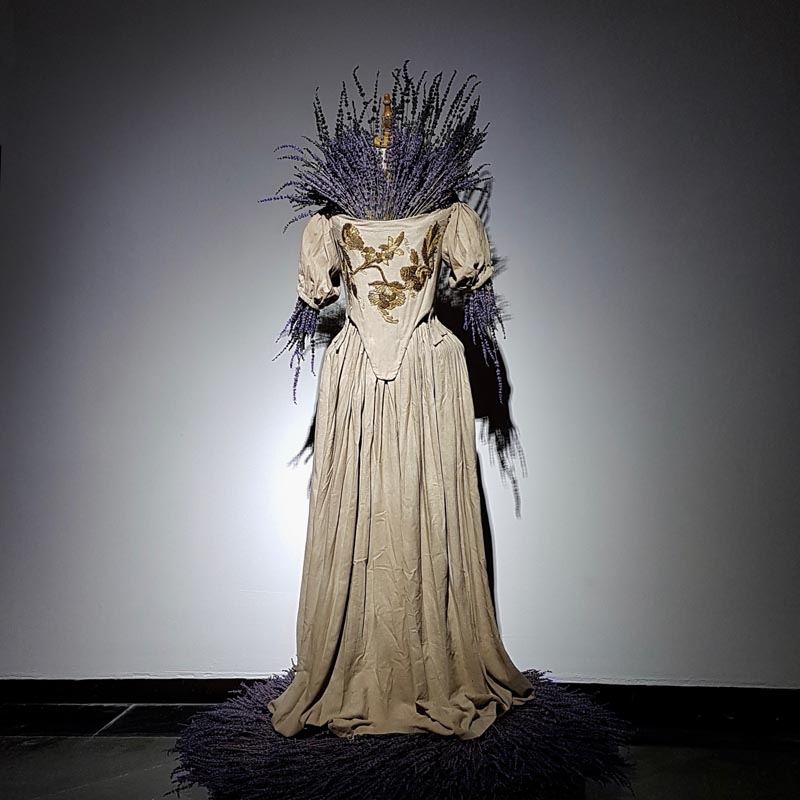
© Anna Dumitriu, Plague Dress, 2018
The dress is appliqued with original 17th century embroideries which are impregnated with the DNA of Yesinia pestis bacteria (Plague), that the artist extracted from killed bacteria in the laboratory of the National Collection of Type Cultures (NCTC) at Public Health England where she is artist in residence.
The dress is stuffed and surrounded by bunches of lavender that were historically carried under people’s noses during the Great Plague of London to cover the stench of infection, and prevent the disease, which was believed to be caused by ‘bad air’ or ‘miasmas’.
The silk that the dress is made from references the Silk Road, a key vector for the spread of plague, but also the fact that the first and worst affected tradespeople to suffer in the ‘Great Plague of London’ were the cloth workers who received the imported fine silks and linen.
Engineered Antibody
Engineered Antibody (2016) explores the field of synthetic biology and takes the form of a beaded necklace based on an antibody purified from the blood of an HIV-positive patient.
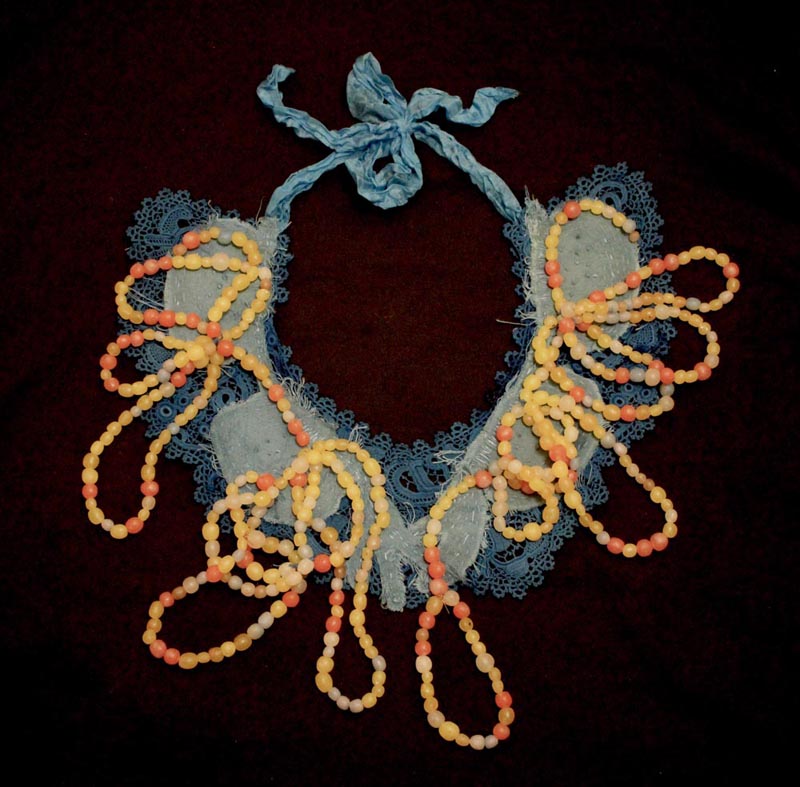
© Anna Dumitriu, Engineered Antibody, 2016
Made up of 452 hand-made beads, it both represents and physically contains the actual 21 amino acids of the unnatural engineered antibody in their precise order and folded into the exact protein structure. An antibody is a protein that is produced by the immune system in order to combat foreign bodies and viruses, which it can bind to. This antibody has been engineered to better block HIV infections through the introduction of an additional amino acid called sulfotyrosine.
The artist draws on the image that all forms of organic life are made of amino acids, which join together like strings of beads to form proteins that fold into three-dimensional structures essential to their function. The beads are then attached to textiles that have been dyed using Coomassie Brilliant Blue, originally a wool dye and nowadays used as a stain in laboratories to visualize and separate proteins. The form of the embroidered calico is based on the diagram of the antibody structure.
Make Do and Mend
Make Do and Mend (2016-17) references the 75th anniversary of the first use of penicillin in a human patient in 1941.
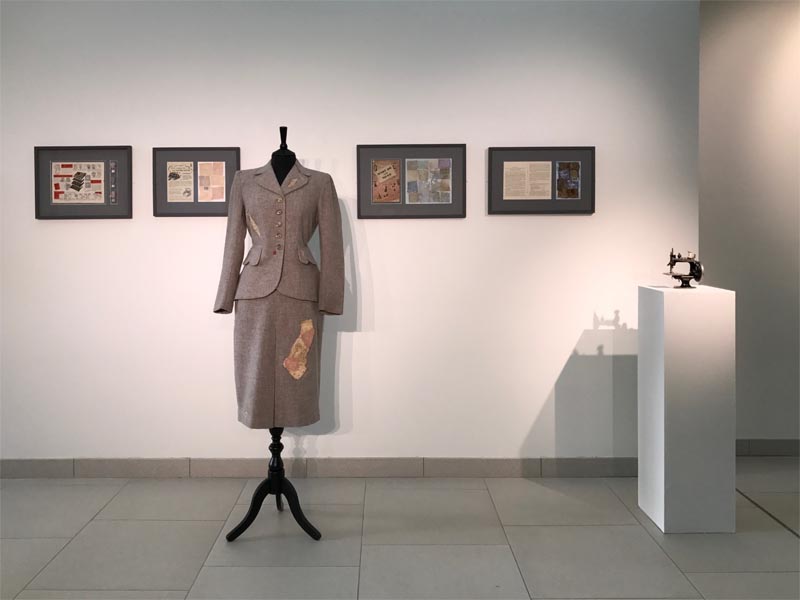
© Anna Dumitriu, Make Do and Mend, 2016-17
It takes the form of an altered vintage wartime woman’s suit marked with the British Board of Trade’s utility logo CC41, which stands for ‘Controlled Commodity 1941’ meaning that the use of materials had been deemed to meet the government’s austerity regulations.
The holes and stains in the suit have been patched and embroidered with silk patterned with E. coli bacteria. The genomes of these bacteria have been genetically modified using a cutting-edge technique called CRISPR that allows researchers to cut and paste DNA. The artist removed the gene responsible for resistance to the antibiotic ampicillin and scarlessly patched the bacterium’s DNA to encode the WWII slogan ‘Make Do and Mend’, using today’s latest technology to ‘mend’ the organism back to its pre-1941, pre-antibiotic era state.
The suit is accompanied by a child’s sewing machine used for wartime mending by the artist’s mother, stitching silk grown with modified bacteria, as well as a series of framed works combining WWII CC41 textiles, altered WWII leaflets that inspired the piece and relics from the CRISPR experiment.
Infective Textiles
Infective Textiles (2011) is a textile-based artwork taking the form of a Regency style dress stained with bacterial pigments and patterned by antibiotics.
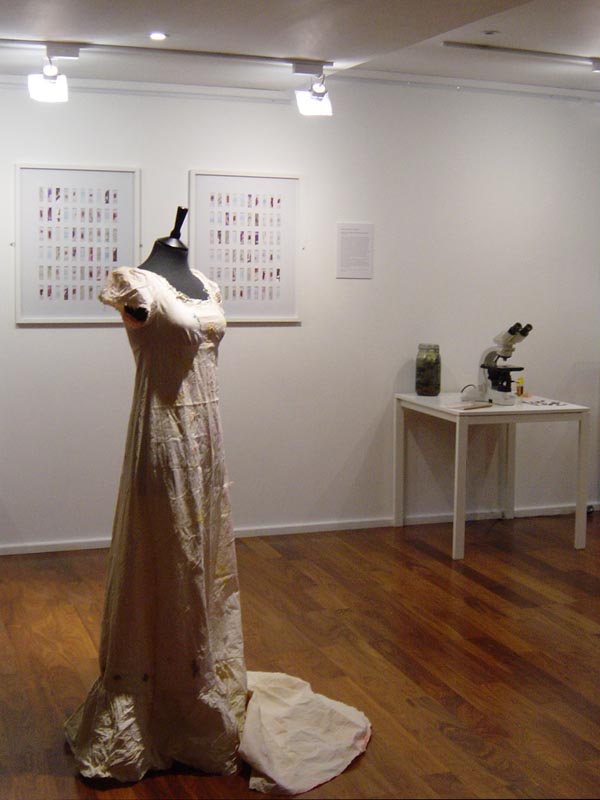
© Anna Dumitriu, Infective Textiles, 2011
This was Dumitriu’s first major work which combined growing bacteria and antimicrobial substances including natural dyes in her work.
The project used ‘kitchen’ science methods and ‘DIY’ microbiological processes to explore the notion of infection control. The work was created at Lighthouse in Brighton as part of a project curated by The Arts Catalyst, Lighthouse and Andy Gracie and made in collaboration with a team of artists and scientists.
The Regency theme of the work was inspired the wives of George IV. Maria Fitzherbert who was an amateur botanist and Caroline of Brunswick who was described by the British press at the time as ‘unhygienic’. The bacteria on the dress were cultured from sites of historical significance of the two women.
Pneumothorax Machine
Dumitriu’s ongoing project, The Romantic Disease (2014), investigates mankind’s strange relationship with the tuberculosis, from early superstitions about the disease, through the development of antibiotics, to the latest research into whole genome sequencing of bacteria.
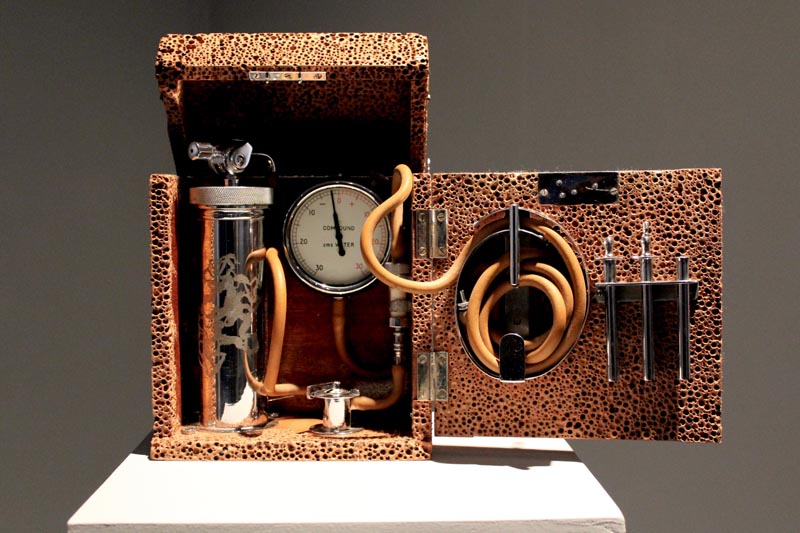
© Anna Dumitriu, Pneumothorax Machine, 2014
This piece from the series takes the form of an altered original Pneumothorax Machine originally used to collapse the lungs of tuberculosis patients in order to rest them.
The carved case reminds us of the texture of the lung tissue as the immune system attempts to ‘wall off’ the ‘foreign’ tuberculosis bacteria that it cannot eliminate. The engraving represents a positive sputum smear test made using a Ziehl–Neelsen staining technique. This rapid diagnostic test can be used to diagnose patients with active pulmonary tuberculosis. The bacteria stain red with Carbol Fuchsin against a background of Methylene Blue and may give the appearance of scattered red ribbons.
Where There’s Dust There’s Danger
Where There’s Dust There’s Danger (2014) explores the difficulties in finding how tuberculosis was transmitted.
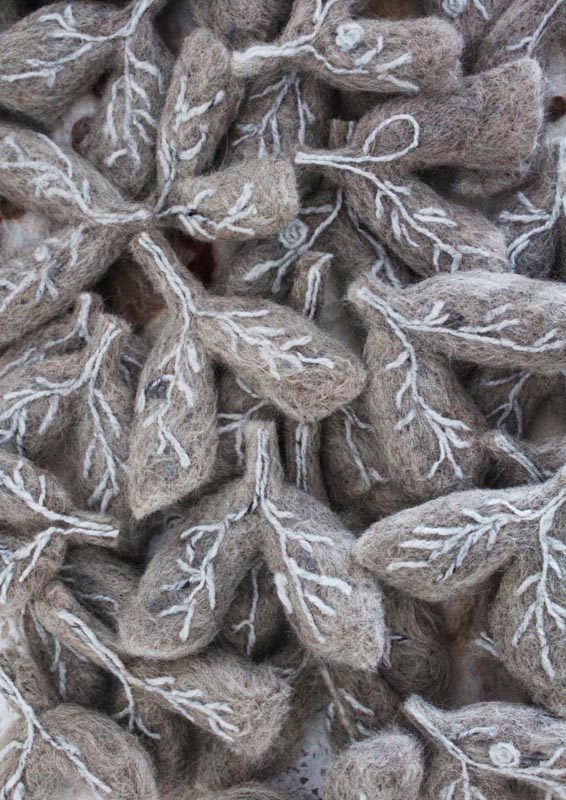
© Anna Dumitriu, Where There’s Dust There’s Danger, 2014
On 24th March 1882, pioneering microbiologist, Robert Koch made the ground-breaking announcement that he had discovered the cause of tuberculosis. It was a tiny, slow growing bacterium, that was later given the scientific name Mycobacterium tuberculosis.
For thousands of years it had been a mystery, with even vampires being blamed for the disease, also known as consumption. In fact, ritually buried TB patients have been found in the United States with stakes through their hearts.
Even after the bacterial cause was found the means of transmission was not entirely clear. We knew that, like COVID-19, coughing was the significant means of transmission, but the question remained about other ways TB could be spread and much of the blame was placed on dust.
In 1902 the advice of the National Society for the Prevention of Consumption was that: “Rooms, passages, and staircases must be kept free from dust. Where there is dust there is danger. Do not chase dust about, nor stir it up. Use damp dusters. Use plenty of tea-leaves or damp sawdust when sweeping the floor. Boil the dusters. Burn the tea-leaves and sawdust.”
The theory was that sufferers would cough up sputum from their lungs and spit it out. The sputum would dry and become mixed with dust which people could breathe in. But it seems very unlikely that the disease could be spread effectively in this manner.
Part of Dumitriu’s ongoing series on tuberculosis entitled The Romantic Disease.
Rest, Rest, Rest!
Until the discovery of the antibiotic streptomycin in 1943, there was no effective treatment for tuberculosis and, much like the COVID-19 patients of today, medical treatments were directed towards enhancing the immune systems of sufferers through a regime of rest, regular meals and fresh air.
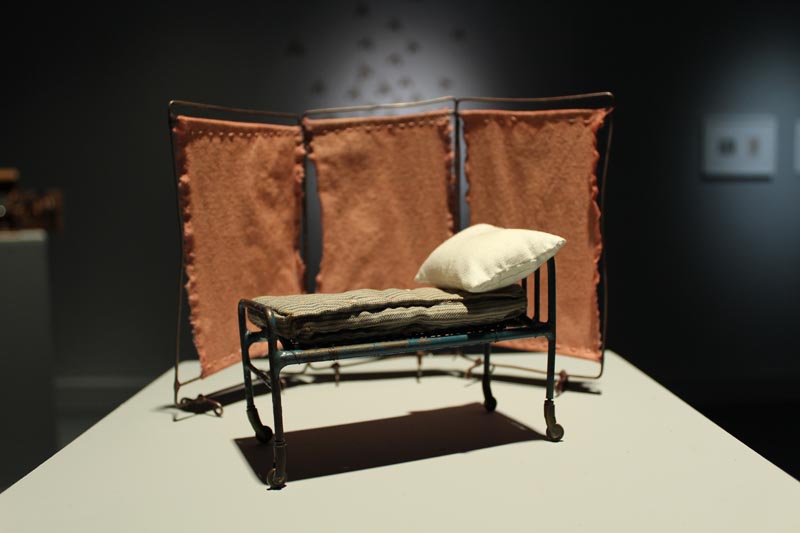
© Anna Dumitriu, Rest, Rest, Rest!, 2014
Calculations were made as to the number of breaths required to perform specific tasks and patients would be confined to bed, sometimes strapped into just one position until they recovered, rebelled or succumbed. Dumitriu’s work Rest, Rest, Rest! (2014) refers to this period, whilst the simple bed form reminds us of those being gathered in temporary hospitals being built around the world now.
Part of Dumitriu’s ongoing series on tuberculosis entitled The Romantic Disease.
Ex Voto
In 2017 Anna Dumitriu began to develop ‘Ex Voto’, an ongoing participatory artwork and major installation that explores the impact of infectious diseases and antibiotics on people’s lives, created through the making of ‘votive offerings’ during drop-in story sharing workshop sessions with members of the public at venues including the History of Science Museum in Oxford and Eden Project.
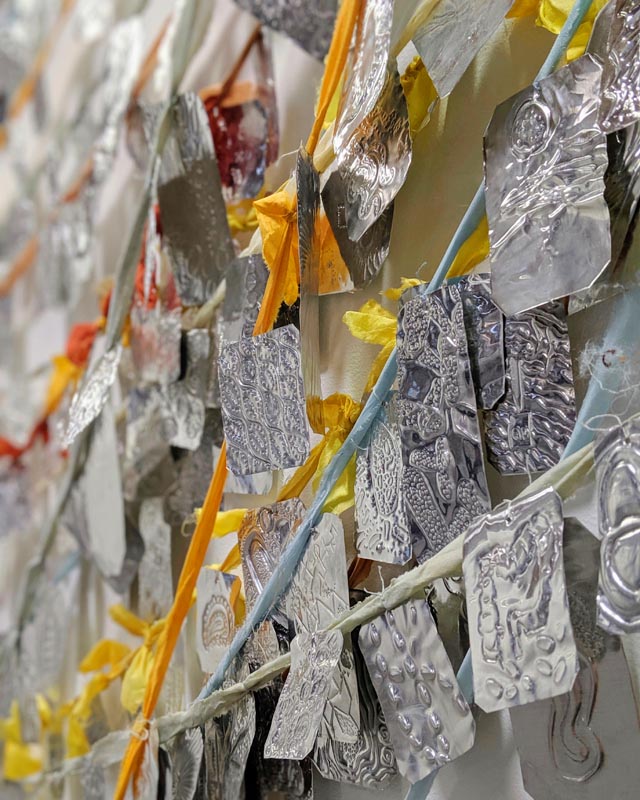
© Anna Dumitriu, Ex Voto, 2017
These secular ‘votive offerings’ reference those found in religious settings symbolising a wish or giving thanks for its fulfilment.
The ‘votives’ are hung on ribbons, stained or dyed with bacteria, including various species of gut microbiota, Staphylococcus aureus and modified antibiotic-producing Streptomyces (all sterilised), as well as natural antimicrobial substances such as madder root, and non-hazardous chemical dyes used in the lab.
_ _ _ _ _ _ _ _ _ _
Dumitriu is now extending the work during COVID-19 lockdown period, documenting her experiences and combining that with other reflections about the changing face of treatment of the disease, successful recoveries, remembrances of lost loved ones and in support of the scientists and healthcare workers for their invaluable contributions.
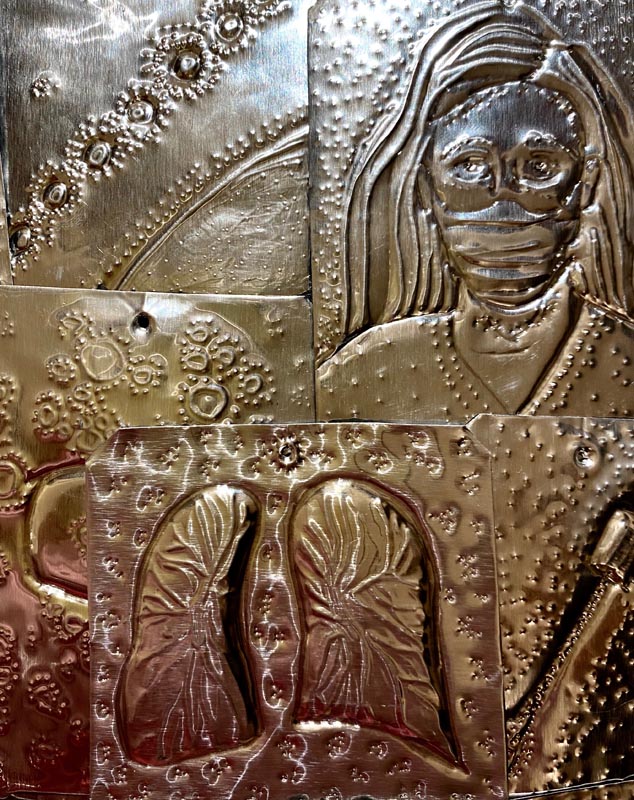
© Anna Dumitriu, Ex Voto II (detail), 2020
Learn more about The BioArt of Anna Dumitriu on her website: https://annadumitriu.co.uk
We'd love to hear what you think about the exhibition. Please comment, praise or criticise, but abusive comments will not be published.
While the Town House is closed we struggle to meet our running costs.
If you have enjoyed this online exhibition and would like to support what we do, please make a donation here.
More virtual exhibitions and events.
Be safe, keep well, we hope to see you when the Town House reopens.
